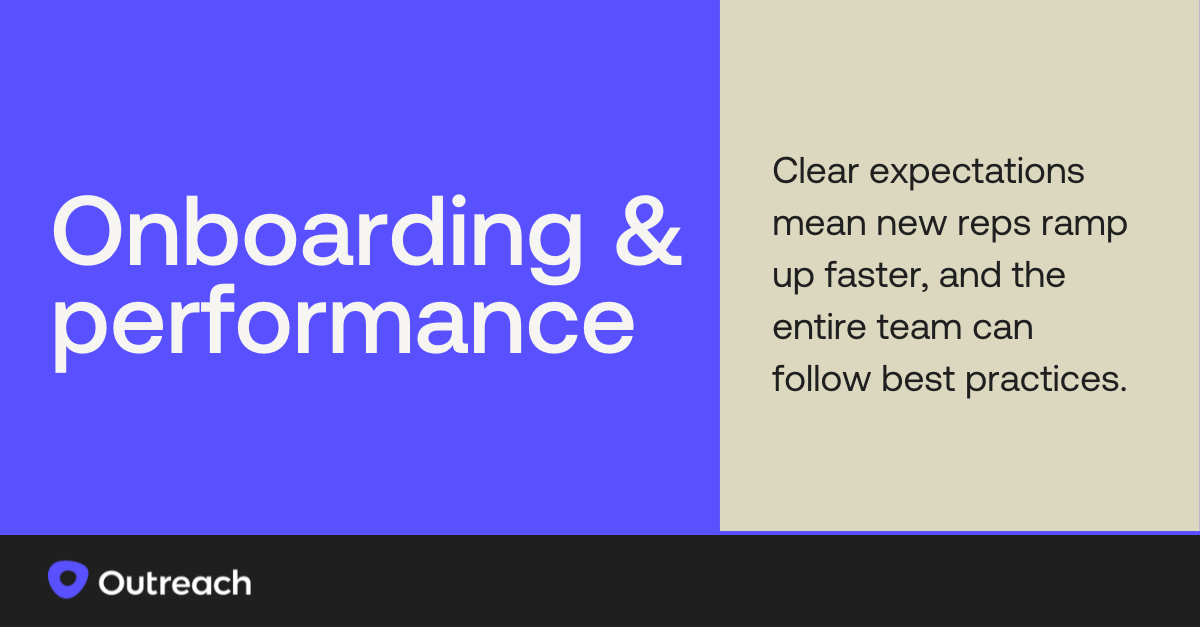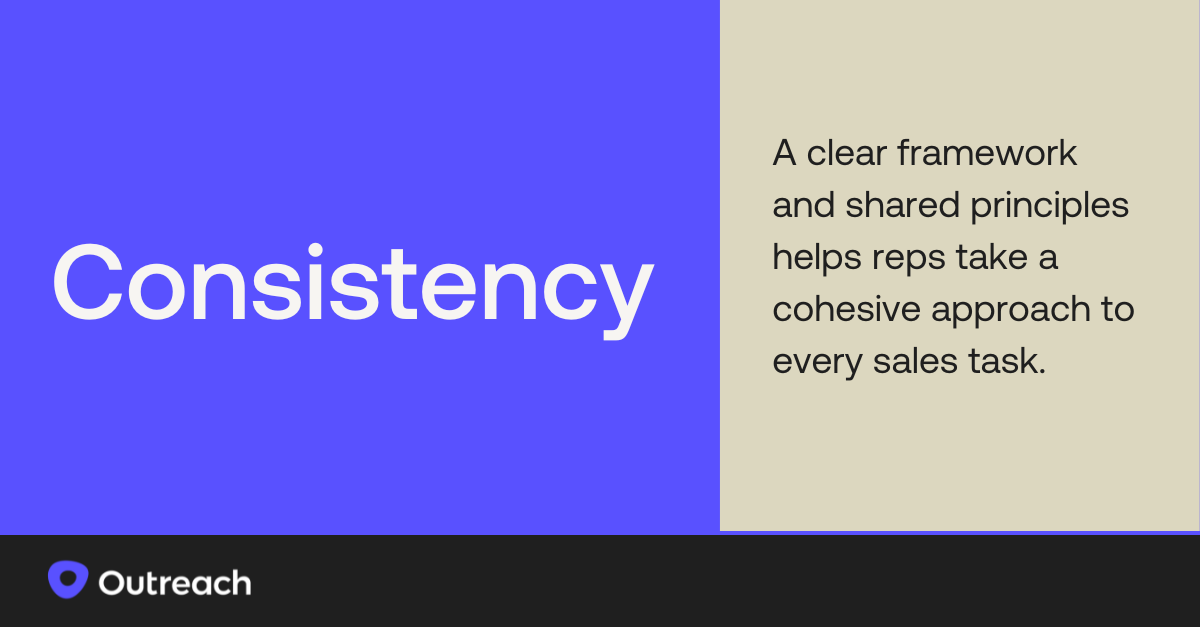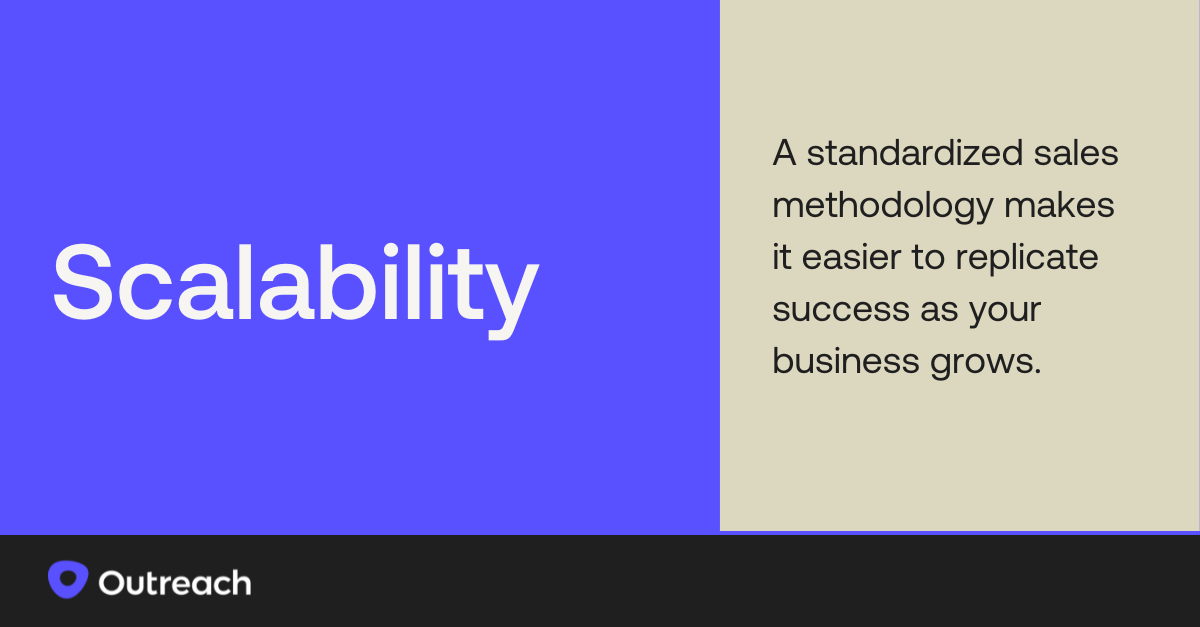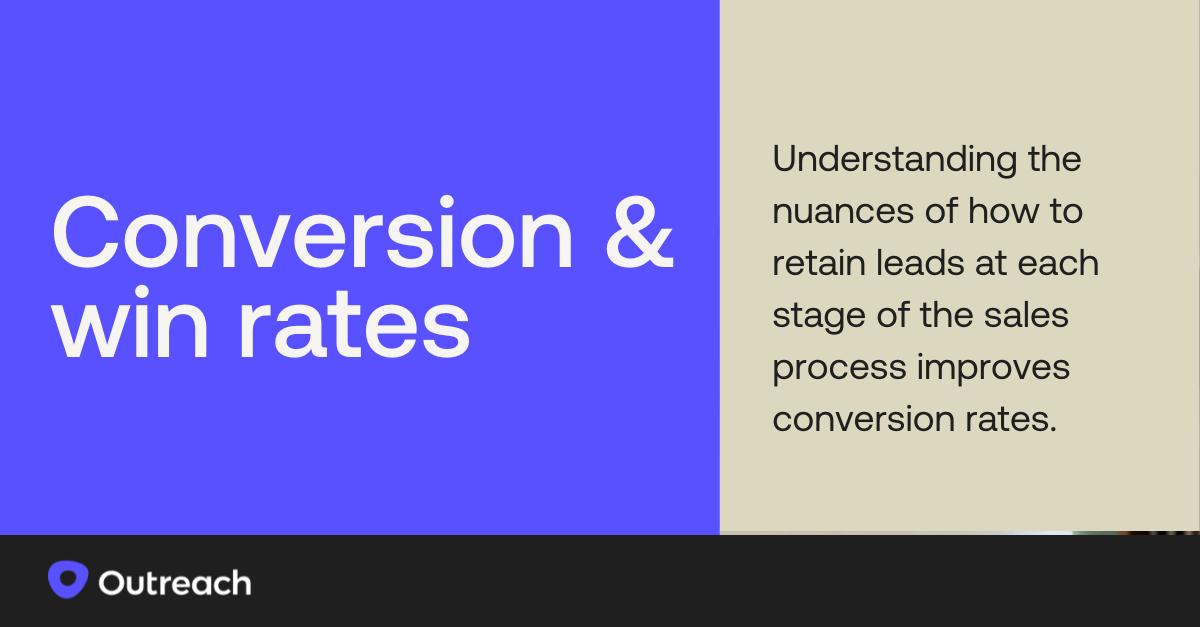Businesses that want to drive increased revenue year after year need to carefully optimize each part of their sales pipeline. But a sales process that delivers results for one organization can easily fail to make an impact with another. Organizations cater to distinct markets and offer unique value propositions. That’s why companies must carefully select the sales methodology that best fits their target audience.
Of course, choosing the sales methodology that best suits your organization comes with its share of challenges. The journey from selection to adoption is rife with potential pitfalls, from misalignment with organizational objectives to resistance among the sales team. Let’s take a look at what adopting a sales methodology entails before reviewing 13 of the top sales methodologies used today.
What exactly is a sales methodology?
A sales methodology is the guiding set of principles that shape and direct the actions of your sales team. It provides a blueprint for how your sales personnel should think about selling and the guidelines they should follow in their interactions with prospects. A sales methodology fosters consistency in how sales professionals identify, engage, and close deals with potential customers.
Sales methodologies are often tailored to address specific phases of the sales process, recognizing that different strategies may be required for prospecting, lead qualification, and closing. Organizations should adopt methodologies that best fit the stages of the sales pipeline they’ve prioritized and align with their most important key performance indicators (KPIs).
How to use your sales methodology to boost win rates in Outreach
With changing buyer behaviors, increasingly complex buying groups, and tightening budgets, sellers need the right tools to stay aligned with their buyers and move deals forward. Watch this on-demand webinar to learn:
- How sales leaders use Outreach to operationalize qualification methodologies like MEDDPICC, MEDDIC, BANT, or SPIN
- How top-performing AEs use mutual action plans to align with all stakeholders all the way to close
- How to use mutual action plans to avoid deal-killing scenarios
4 reasons to adopt a sales methodology
Adopting a sales methodology can deliver a range of benefits for your business:
- Onboarding and performance. A well-defined sales methodology is an invaluable tool when onboarding new sales hires. It helps newcomers grasp the organization's sales philosophy and start making tangible contributions more quickly. Accelerating the integration of new team members contributes to a more efficient and productive sales force.
- Fostering consistency. A sales methodology provides a unified framework and shared principles, ensuring that each sales professional takes a cohesive approach to every sales task.
- Scalability. As your business grows, a standardized sales methodology makes it easier to replicate successful strategies, ensuring that expansion doesn't impact sales performance.
- Lead retention guidance. A sales methodology helps sales professionals understand the nuances of how to retain leads at each stage of the sales pipeline, enhancing conversion rates.
The 13 best sales methodologies explained
There’s no shortage of sales methodologies to choose from, which makes carefully evaluating these frameworks all the more important. Most sales methodologies share some foundational principles, like a quality-centric approach to lead generation and a focus on building deep relationships over accumulating leads in bulk. But businesses should still assess each methodology for alignment with their organizational goals, ease of adoption, and proven success in similar industries.
1. SPIN selling
Each element of SPIN selling — situation, problem, implication, and need-payoff — corresponds to a crucial part of the sales process, providing a structured approach to understanding and addressing customer needs. SPIN selling recognizes that understanding the customer's situation, identifying problems, realizing the implications, and presenting a need-payoff solution are pivotal in effective selling. It emphasizes questioning and information-gathering across all four of these stages:
- Situation questions. Uncover the customer's current state or circumstances.
- Problem questions. Identify challenges or issues the customer may be facing.
- Implication questions. Explore the consequences or impact of the identified problems.
- Need-payoff questions. Present the solution in a way that highlights its benefits and addresses customer issues.
By focusing on the buyer's perspective, sales professionals can tailor their solutions to address specific pain points, resulting in more meaningful and effective interactions.
When adopting SPIN selling, customize your questions based on the unique needs of each potential customer, and pay close attention to their responses to gain a full understanding of the prospect’s needs. For instance, in a software sales scenario, a SPIN approach might involve understanding the client's current offerings (situation) and then uncovering issues or limitations with them (problem). The sales rep would then discuss the potential consequences of these issues (implication), and finally, proposing a solution with clear benefits (need-payoff).
2. N.E.A.T. selling
N.E.A.T. stands for need, economic impact, access to authority, and timeline. N.E.A.T. selling has roots in several notable predecessors, including BANT (budget, authority, need, timeline), ANUM (authority, need, urgency, money), and AN (authority, need). These earlier methodologies laid the groundwork for N.E.A.T., emphasizing the importance of understanding budget constraints, identifying decision-makers, assessing needs, and gauging urgency.
Each component of N.E.A.T. contributes to a comprehensive understanding of the prospect's situation and the factors influencing their purchasing decision:
- Need. Understand the prospect's needs and pain points.
- Economic impact. Assess the financial implications and benefits of the proposed solution.
- Access to authority. Identify and establish communication with decision-makers.
- Timeline. Determine the prospect's urgency and the timeframe for making a decision.
N.E.A.T. selling focuses on the latter portion of the sales process, especially the qualification and closing phases. As the sales cycle progresses, honing in on specific elements like economic impact and access to decision-makers becomes critical for successfully closing deals. By delving into economic considerations and ensuring access to decision-makers, sales professionals using N.E.A.T. can align their offerings with the prospect's specific needs and constraints, facilitating a smoother path to a deal.
3. SNAP selling
The four key aspects of SNAP selling — simple, invaluable, aligned, and priority — reflect its focus on the initial phases of prospecting and engagement. These four fundamentals recognize that simplicity and clarity in communication are vital in capturing the prospect's attention and interest from the outset:
- Simple. Prioritize simplicity in your communication and offerings to avoid overwhelming the prospect.
- iNvaluable. Ensure that your solution brings undeniable value to the prospect's specific needs.
- Aligned. Align your pitch and offerings with the prospect's unique challenges and objectives.
- Priority. Emphasize the urgency and priority of your solution in addressing the prospect's pain points.
By keeping communications straightforward and aligning offerings with customer priorities, SNAP enables sales professionals to build trust swiftly and establish a foundation for meaningful relationships.
4. MEDDIC
MEDDIC is a six-part methodology that leverages quantitative standards and other key factors that influence the decision-making process in complex B2B sales scenarios. MEDDIC focuses on the qualification and closing stages of the pipeline, with all six factors placing a strong emphasis on decision-making criteria that drive the prospect's purchasing decisions:
- Metrics. Identify and comprehend the KPIs that matter to the prospect's business.
- Economic buyer. Identify the individual with the financial authority and responsibility for the purchasing decision.
- Decision criteria. Understand the specific criteria that the prospect uses to make decisions.
- Decision process. Map out the steps and stages involved in the prospect's decision-making process.
- Identify pain. Uncover and comprehend the prospect's pain points and challenges.
- Champion. Cultivate a strong advocate within the prospect's organization.
MEDDIC's close attention to quantitative standards is one of its biggest advantages. It fosters a deep and tangible understanding of important metrics, economic considerations, and other decision-making factors. This provides a robust framework that helps sales professionals align their offerings with a prospect's business objectives.
5. Challenger selling
Challenger selling revolves around a persona for sales professionals called, appropriately, the "challenger." Sales reps that follow this approach adopt a proactive and assertive style. They present themselves as educators and thought leaders rather than simply responding to customer needs. And they aren’t afraid to actively challenge their clients' thinking when necessary. Challengers purposefully introduce constructive tension into the sales conversation, bringing new perspectives to bear and prompting the prospect to reevaluate their current approach.
Challenger selling can be used across all stages of the sales process, but it particularly shines during early sales phases involving customer engagement and education. These early stages are more apt to involve challenging the prospect's preconceptions, providing new insights, and ultimately shaping their understanding of their own needs.
When implemented well, challenger selling helps sales personnel establish themselves as trusted advisors, fostering a deeper connection with prospects. This requires investing time in thoroughly understanding the prospect's industry, challenges, and potential opportunities. It also relies on Introducing challenges and insights in a constructive manner, aiming for collaborative problem-solving rather than engaging in confrontations with a potential customer.
6. Inbound selling
As the name implies, inbound selling is closely connected with the principles of inbound marketing. Both methodologies share the philosophy of attracting, engaging, and delighting prospects by providing valuable content and personalized experiences. Inbound selling dovetails with a broader inbound marketing strategy, ensuring a seamless transition from attracting leads to converting them into customers.
Inbound selling also incorporates inbound marketing’s concept of the flywheel, envisioning the sales process as a continuous cycle that relies on continuous momentum and delighting customers at every stage of their journey. Inbound selling seeks to keep the flywheel spinning smoothly through positive customer interactions and nurturing relationships beyond the point of sale.
Inbound selling relies on collaboration between marketing and sales personnel — otherwise known as sales enablement. Marketing professionals should provide the sales team with the necessary resources and insights to engage effectively at each stage of the buyer's journey. This empowers sales professionals to act as knowledgeable representatives of your organization and helps them build credibility with prospects.
7. Customer-centric selling
Customer-centric selling is a multifaceted methodology focused on understanding, addressing, and exceeding the expectations of the customer throughout the entire sales cycle — and beyond. Each of its 8 key points revolve around establishing and fostering long-term, productive relationships with prospects:
- Understanding customer needs. Customer-centric selling prioritizes thorough research into prospects and active listening to identify pain points and aspirations, ensuring that every sales interaction is tailored to address specific customer requirements.
- Building trust and credibility. Customer-centric selling emphasizes transparency, reliability, and consistent communication to foster a trusting relationship between the sales professional and the potential customer.
- Effective communication. Clear and effective communication is a hallmark of customer-centric selling. Sales professionals are encouraged to articulate value propositions to align with customer goals, fostering a mutual understanding of the benefits the organization’s offerings provide.
- Customization of solutions. Customer-centric selling steers away from one-size-fits-all approaches. Instead, it encourages sales professionals to tailor solutions based on the needs and preferences of each prospect, demonstrating a commitment to delivering genuine value.
- Collaborative problem-solving. Customer-centric selling promotes a collaborative approach to problem-solving. Sales professionals work closely with customers to understand challenges and create solutions, developing a sense of partnership and shared objectives.
- Focus on long-term relationships. Beyond individual transactions, customer-centric selling places a strong emphasis on cultivating long-term relationships. Sales efforts are geared towards becoming a trusted advisor, providing continued support and value throughout the customer's journey.
- Continuous feedback loop. Regularly seeking and incorporating customer feedback helps sales strategies remain adaptive and responsive to evolving customer needs and market dynamics.
- Customer success integration. Customer-centric selling extends beyond the initial sale to include a seamless integration with customer success initiatives. This ensures that customers derive more value from their purchase and also experience ongoing support and satisfaction.
8. Conceptual selling
Conceptual selling evolved as a response to transactional approaches to sales, emphasizing a deeper understanding of the client's needs and the need for a consultative approach to effectively address them. Conceptual selling generally focuses on the early stages of the sales process, helping to understand and shape the potential client's concept of the solution your organization is offering. The strength of Conceptual Selling lies in its ability to create a shared vision with the prospect, resulting in a more targeted and effective sales strategy.
To get the most out of this strategy, customize presentations to resonate with the prospect’s unique perspective, and proactively address objections by aligning responses with the client's concept. Conceptual selling involves not just showcasing the features and benefits of your offering but understanding how the prospect conceptualizes the software's role in addressing their business challenges. The sales professional then tailors their presentation to highlight specific functionalities that directly align with that conceptualization, ultimately leading to a more impactful sales pitch.
9. Target account selling
Target account selling (TAS) streamlines the sales process by concentrating efforts on high-potential accounts. It focuses on meticulous lead qualification and targeting prospects who not only show interest in your organization’s offerings but also possess the authority to make purchasing decisions.
Target account selling helps maximize efficiency by directing resources toward high-value prospects. Rigorous evaluation of leads helps ensure a focus on accounts with the highest potential for conversion, while thorough research lets sales personnel pinpoint individuals with the authority to make purchasing decisions. Sales personnel should then establish connections with both decision-makers and other stakeholders at the targeted organization.
10. The Sandler Selling System
The Sandler Selling System was developed by David H. Sandler in the late 1960s. It diverged from existing sales approaches by introducing a more collaborative and relationship-centric methodology. The Sandler Selling System redefines the seller-buyer relationship throughout the sales cycle by emphasizing mutual evaluation, where the seller assesses the buyer's suitability for their offering as much as the buyer evaluates the seller.
The two-way evaluation process allows both the seller and buyer to determine if the partnership is a fit. The system promotes a no-pressure approach, focusing on open communication and collaboration rather than traditional hard-selling tactics. This helps build a foundation of trust and collaboration early in the sales process, leading to more genuine and sustainable partnerships.
11. Solution selling
Solution selling, created by Frank Watts and refined by Michael Bosworth, reorients the sales process by adopting a solution-first approach. It shifts the focus from products to tailored solutions that directly address the prospect's challenges and objectives. This enhanced customization fosters a deeper connection with prospects and increases the likelihood of closing deals.
Solution selling requires a close examination of the prospect's needs and pain points and benefits from a consultative approach where the sales professional acts as a trusted advisor, guiding the prospect toward solutions that best fit their requirements. Sales personnel should engage in collaborative discussions to identify and address unique challenges faced by the prospect. Instead of promoting a pre-packaged set of products or services, sales reps adapt offerings to better resonate with the prospect.
12. Gap selling
Gap selling attempts to meet the need for a more dynamic and outcome-oriented sales strategy. It centers around understanding and communicating how a potential customer can bridge the gap from their current state to their desired future state. Gap selling requires aligning the sales process closely with the prospect's aspirations, creating a more compelling case for conversion.
The primary goal of gap selling is to effectively communicate how your organization’s offering can lead to positive outcomes for the prospect. Sales teams must be ready to develop a nuanced understanding of where the prospect is and where they want to end up. Sales personnel then position their offerings not just as a set of features but as a pathway to overcoming specific hurdles and achieving the prospect’s desired outcomes.
13. Value selling
Value selling places its primary focus on communicating the significant value and benefits that customers derive from a product or service, particularly in comparison to its price. It aligns with the broader shift towards customer-centric approaches in sales and can be effective throughout the stages of the sales cycle.
Value selling involves effectively articulating the unique value propositions and benefits of a product or service. It emphasizes communicating the return on investment (ROI) and demonstrating how your organization’s offering provides substantial value for the prospect. It requires aligning pricing strategies with the perceived value customers receive thoroughly understanding customer needs to tailor value propositions effectively. The sales professional should quantify benefits to the extent possible, like time and cost savings, efficiency gains, and potential revenue increases.
Implementing a sales methodology at your company
When evaluating and implementing a sales methodology at your company, there are a few strategies you should follow to get the best results.
Determining sales team needs
Before selecting a sales methodology, work to understand the needs of your sales team at every stage of the pipeline. Gather and analyze data at each stage of the sales pipeline to gain a clear understanding of what's working and what isn't. You should also communicate with stakeholders in and out of the sales department to get a full picture of your organization’s current capabilities. This will better equip you to choose and fine-tune a sales methodology that aligns with your sales team’s strengths and helps address their weaknesses.
Methodology selection and alignment
Once armed with data, select methodologies that focus on identified performance gaps while keeping in mind your team’s capacity for change. Consider a mix of methodologies if it best aligns with your team's diverse challenges. It's crucial to balance innovation with preserving effective current processes. Align the chosen methodologies with your team's existing workflow to the extent possible to facilitate a smoother transition.
Communication and ongoing support
Clearly communicate the rationale behind adopting the selected methodologies to your sales team. Provide a transparent accounting of how the new approach aligns with organizational goals and will benefit both the team and individual sales professionals. Continuous support and training are vital to ensuring a successful transition. Holding regular check-ins, establishing feedback loops, and ensuring supportive resources are accessible all help maintain positive momentum and address any issues that may arise.
Choosing the right sales platform
Throughout this process, leverage a robust sales platform to streamline and enhance your efforts. Sales platforms provide tools for data analysis, process automation, ongoing training and support, and performance tracking, aiding in the quick implementation of new methodologies. Look for software that offers customization, integrates with your team’s existing tools, and can scale to accommodate evolving needs.
Start leveraging sales methodologies to close more deals
Even the best sales methodology is likely to fall short of expectations without the right tech to back it up. Outreach is a leading sales execution platform that provides all the capabilities needed to effectively implement the ideal sales methodology for your business.
Outreach is designed to empower sales teams at every stage of the sales process by streamlining workflows, maximizing customer engagement, enhancing collaboration, and providing valuable insights to boost the efficiency and effectiveness of your sales efforts.
Request a demo today to see how Outreach can elevate your sales methodology and help you close more deals.
Stay up-to-date with all things Outreach
Get the latest product news, industry insights, and valuable resources in your inbox.








